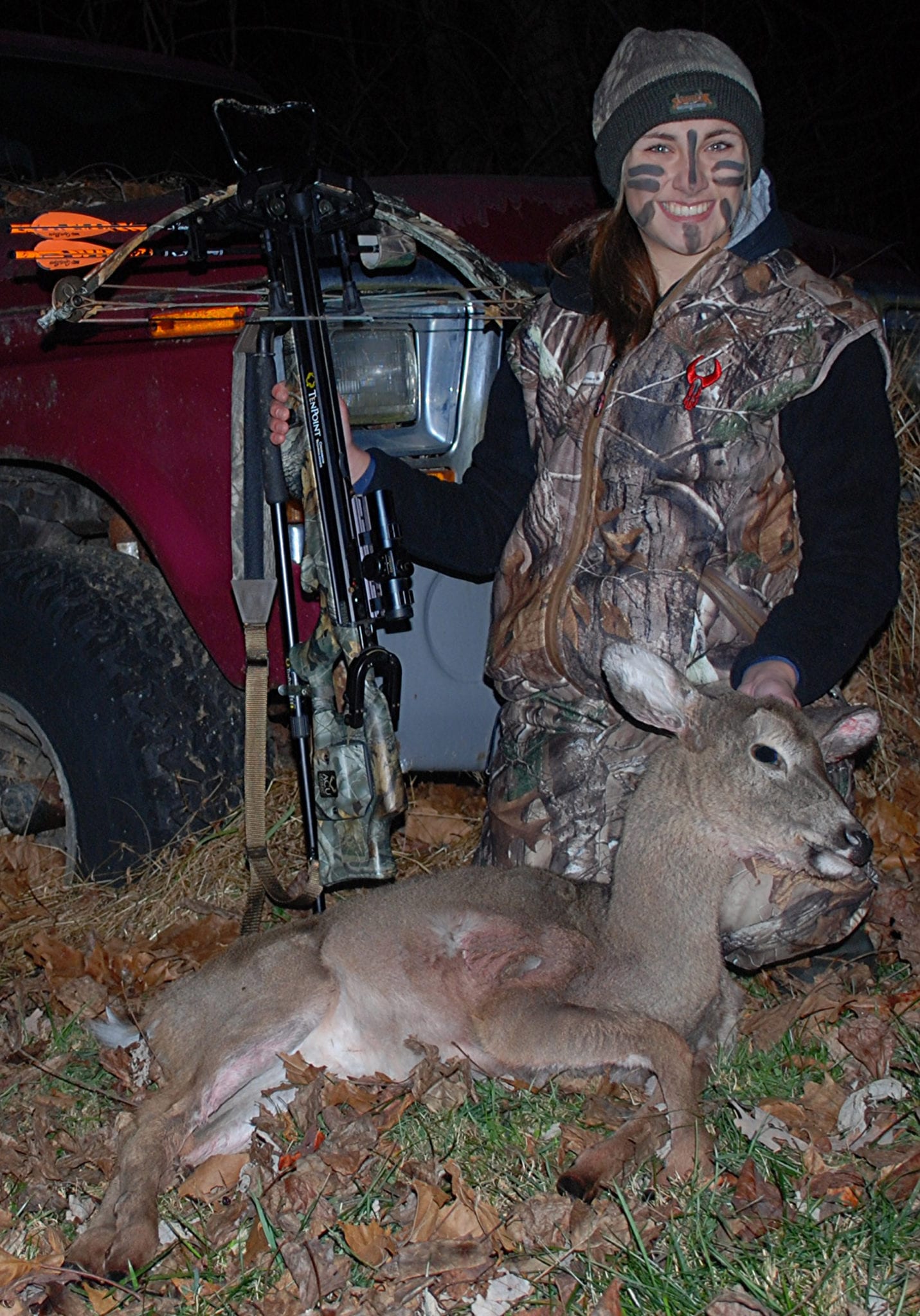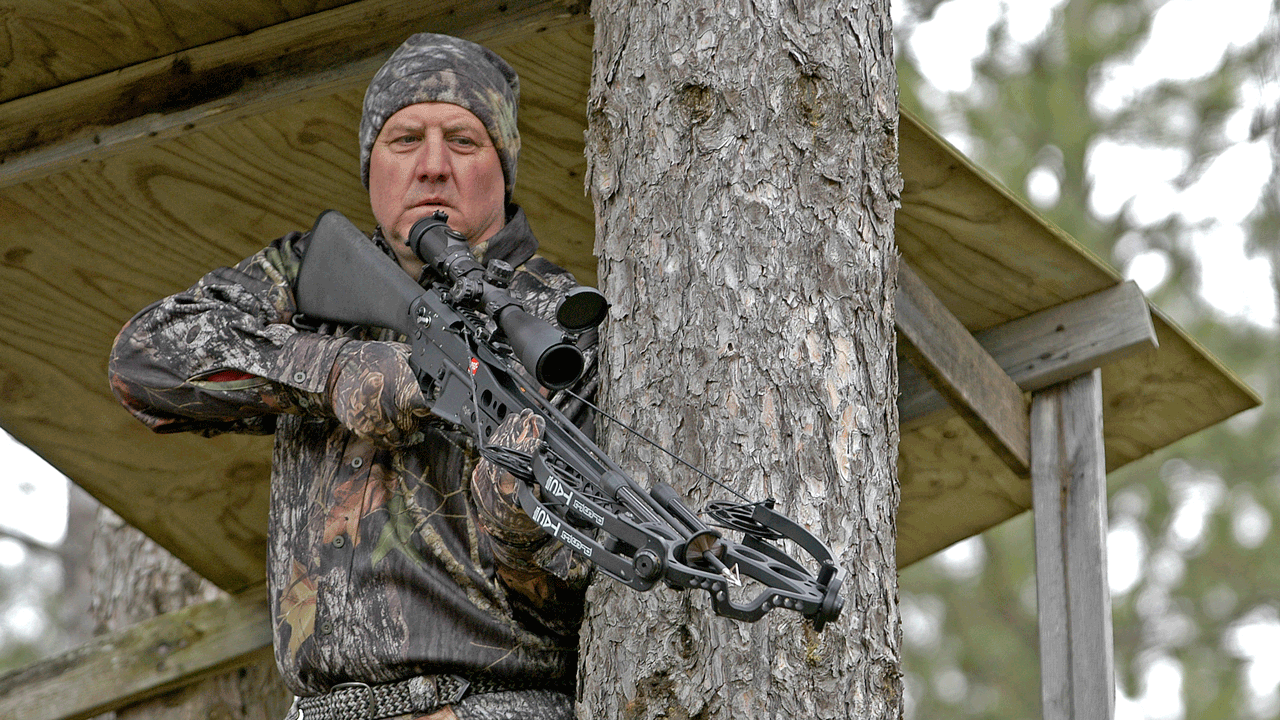Three autumns ago, Wisconsin joined the growing ranks of states that opened its archery deer season to crossbows.
And much like the states that came before, deer-kill numbers in the Badger state show we have bigger concerns than the crossbow’s impact on whitetail numbers.
Yes, crossbow shooters increased in number each year since Wisconsin’s inaugural “X-bow” season in 2014. And yes they’ve killed more deer each year than the last. And yes they’ve killed increasingly more bucks each year.

What impact does crossbow hunting have on deer numbers?
And yes, crossbow-killed deer, including bucks, made up a higher percentage of the archery kill and total deer kill each year.
But here’s the thing: Those increases are so modest and the added recreation so priceless that it’s futile trying to convince lawmakers crossbows are hurting a whitetail herd or shredding our bowhunting heritage.
Besides providing more time outdoors for more hunters, crossbows contributed to the archery season’s all-time three largest buck kills in Wisconsin’s history: 46,201 in 2014; 51,823 in 2015; and 51,734 in 2016. Then again, those aren’t shocking, glass-shattering records. The state’s top three archery buck kills before crossbows were 45,988 in 2012, 45,562 in 1999, and 45,498 in 2003.
Before going further, let’s acknowledge no evidence we slide under the microscope will stop some folks from hating crossbows. Some will even deny their disdain, claiming they simply don’t want crossbows in the archery season.
What to make of such spare opposition? Wisconsin offers one of the nation’s longest archery deer seasons, stretching 114 consecutive days from mid-September through early January. No one is forced to use a crossbow, and landowners can’t be prosecuted for forbidding crossbows in their woods.
Yes, compound bows require more practice to achieve proficiency than crossbows, but the compound bow requires less practice to shoot proficiently than recurves or longbow – the original justification for lengthy archery seasons. So, let’s be careful about pushing personal preferences any further.
Let’s move on, and look at some relevant numbers from Wisconsin’s first 3.25 archery/crossbow seasons.
As crossbow critics feared – and Michigan foretold from 2009 to 2011 during its first three years of crossbow hunting – participation increased each year.

Crossbow hunters in Wisconsin registered 15,768 bucks in 2014, which was 11 percent of the combined seasons’ buck kill.
— The Wisconsin Department of Natural Resources sold 113,506 crossbow licenses in 2014, 131,293 in 2015 (up 16 percent), and 149,348 in 2016 (up 14 percent), for a three-year increase of 31.5 percent.
— The combined buck/antlerless crossbow kill rose all three years, from 26,891 in 2014, to 34,094 in 2015 (up 27 percent); and to 39,776 in 2016 (up 17 percent), for a 48 percent increase overall.
— The crossbow buck kill also rose all three years, from 15,768 in 2014, to 20,594 in 2015 (up 31 percent), and to 23,562 in 2016 (up 14 percent), for a 49 percent increase overall.
— Crossbow kills made up an increasingly larger percentage of the total archery/crossbow kill each year: 33 percent in 2014, 39 percent in 2015, and 42 percent in 2016.
— Crossbow kills also accounted for increasingly larger percentages of the archery/crossbow buck kill each year: 34 percent in 2014, 40 percent in 2015 and 45.5 percent in 2016.
We now pause to put those increases in perspective. Let’s examine the crossbow’s impact on Wisconsin’s overall deer kill. Warning: You must look closely to notice.
— The crossbow’s 26,891 combined buck/antlerless kill in 2014 accounted for 9 percent of the total archery and firearms hunting seasons’ kill. The 34,094 crossbow kill in 2015 accounted for 11 percent of that year’s total kill; and the 39,776 crossbow kill of 2016 accounted for 12 percent of that year’s total kill.
— What about the combined buck kill for all archery and firearms seasons? The crossbow’s 15,768 bucks in 2014 accounted for 11 percent of the combined seasons’ buck kill. Its 20,594 bucks in 2015 accounted for 13.5 percent of the total combined seasons’ buck kill. And the crossbow’s 23,562 bucks in 2016 accounted for 15 percent of the total combined seasons’ buck kill.
Like it or not, those 1 to 4 percentage-point increases in total kill don’t rattle windows or upset anyone except crossbow foes. I doubt even this will jolt anyone who’s objective: Crossbow hunters this year were on track to kill more bucks than their recurve/compound colleagues. As of mid-October, crossbow hunters had registered 3,548 bucks and 4,220 antlerless deer, while regular archery hunters had tallied 2,928 bucks and 5,245 antlerless deer.
But again, perspective requires we consider the totals from the state’s youths-only gun-hunt Oct. 7-8. The youngsters registered 3,165 bucks and 3,674 antlerless deer during their two-day season. That’s only 11 percent fewer bucks than crossbow hunters registered in 25 days of hunting.
Wisconsin’s deer herd can satisfy such demands for meat and recreation, and crossbows provide another way for hunters to enjoy an abundant resource. Rather than wasting more time demonizing crossbows, opponents should work on something positive.
Start inviting friends, family and co-workers to pick up a bow – any bow – and join you often on the range and in the deer woods.
Sharing is more satisfying than hording.

 By
By 



